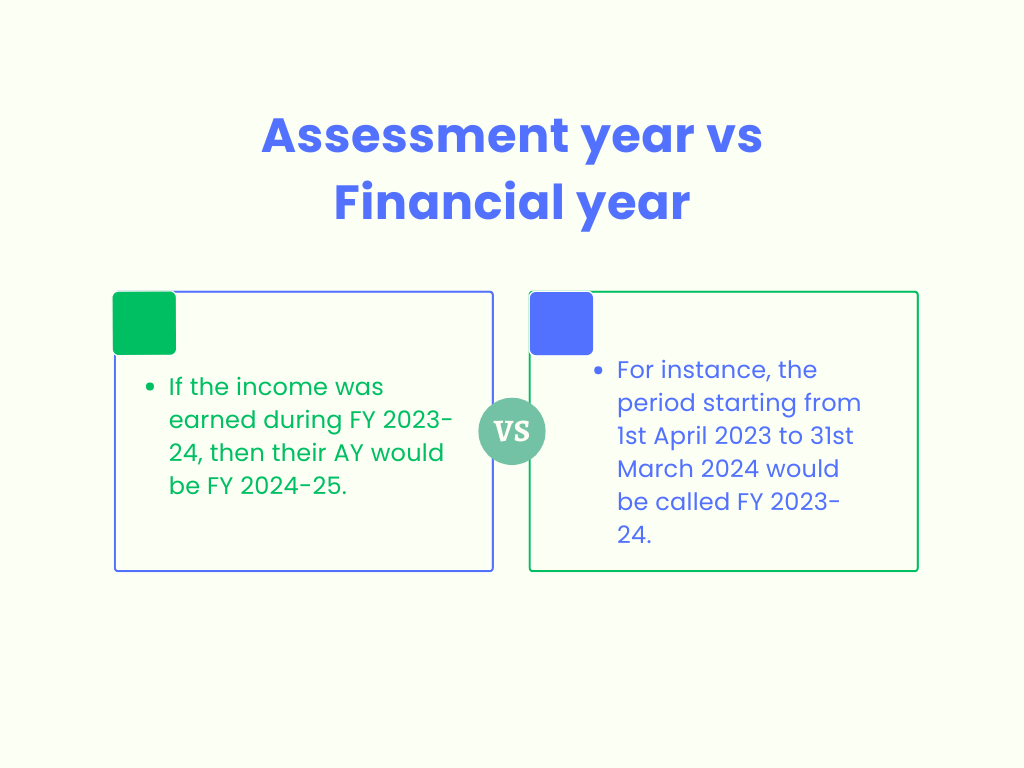Assessment Year under Income Tax Act
There are several terms and methodologies in taxation, that hold much importance in the world of the taxpayers, especially for them to be in a position to meet all their obligations as required by the law. One such term is “Assessment Year.” This article discusses what an assessment year includes, why it is important, and what relation it bears to other fiscal periods, how AY is different from FY, why it does matter, and exactly what the taxpayers need to do during the Financial Year/Assessment Year.
What is an Assessment Year AY?
Income tax returns are to be submitted by the taxpayers of a country during this period for the income year preceding the current fiscal year. They then assess the returns, calculate the tax liability and analyze the information generated by the taxpayers.
Assessment year of income of 2023-24 shall be the year AY 2024-25. During this working year, the taxpayer will file returns, and his or her taxes will determine the assessable income plus any allowable deductions for the year of assessment.

Difference between Financial Year and Assessment Year
- Financial Year: The year in which income is earned by a taxpayer. Financial year runs from the 1st April of any particular year to 31st March of the next year. For instance, the period starting from 1st April 2023 to 31st March 2024 would be called FY 2023-24.
- Assessment Year: The subsequent year of a financial year in which the income earned during that financial year is considered as their assessable income. For example, if the income was earned during FY 2023-24, then their AY would be FY 2024-25.
Significance of an AY
- Income Tax Filing: An assessment year would mean the time or duration given to the taxpayer to file returns. It would mean a penalty and interest if not filed within the set time.
- Verification by Tax Authorities: The tax authorities verify the returns submitted by taxpayers. It involves scrutinizing the various financial records filed with the returns by auditing, cross-verifying all the reported incomes, and calculating the liability of taxes.
- Payment of taxes: Taxes could also be paid as advance taxes throughout the year of income.
- Facilitating future financial planning: Determination of tax liabilities in the assessment year encourages taxpayers to decide on their financial management in an accurate manner.
Responsibilities
- Tax Filing within the Right Time: Income tax returns shall be filed with the relevant tax authority within the time, usually by July 31 for individual taxpayers and September 30 for corporate taxpayers, although different tax authority jurisdictions may have different due dates
- Accurate Documentation: The taxpayer must ensure that all supporting documents concerning the cash transactions, be it bank statements, salary slips, investment proofs, or certificates related to deductions, are in place and correct
- Proper use of deductions and exemptions: A taxpayer should properly apply relevant deductions and exemptions under sections 80C, 80D, 80CCD, & more, so that the liability for taxes can be minimized
- Payment of Outstanding Taxes: Outstanding tax arrears must be paid in the same year of assessment to avoid penalty
- Notice and Need Compliance: There may be situations where the tax authority issues notices for clarification of information submitted with the original tax return and demands other documents to verify the information. The taxpayer should act on such notices timely to avoid increases in penalties or further complications.
Common Challenges Faced in an AY
- Record Keeping
- Updates in Tax Law Understanding
- Errors in Filing
- Managing Financial Planning
Conclusion
Staying abreast and organized will safeguard the interests of taxpayers besides helping them reach their goals for the assessment year with proper planning, thus minimizing risks of penalty and maximizing financial planning opportunities. Reach out to TaxDunia to get your ITR or GST returns filed on time. We also offer valuation, advisory, consultation, and more services related to taxation and finance.

